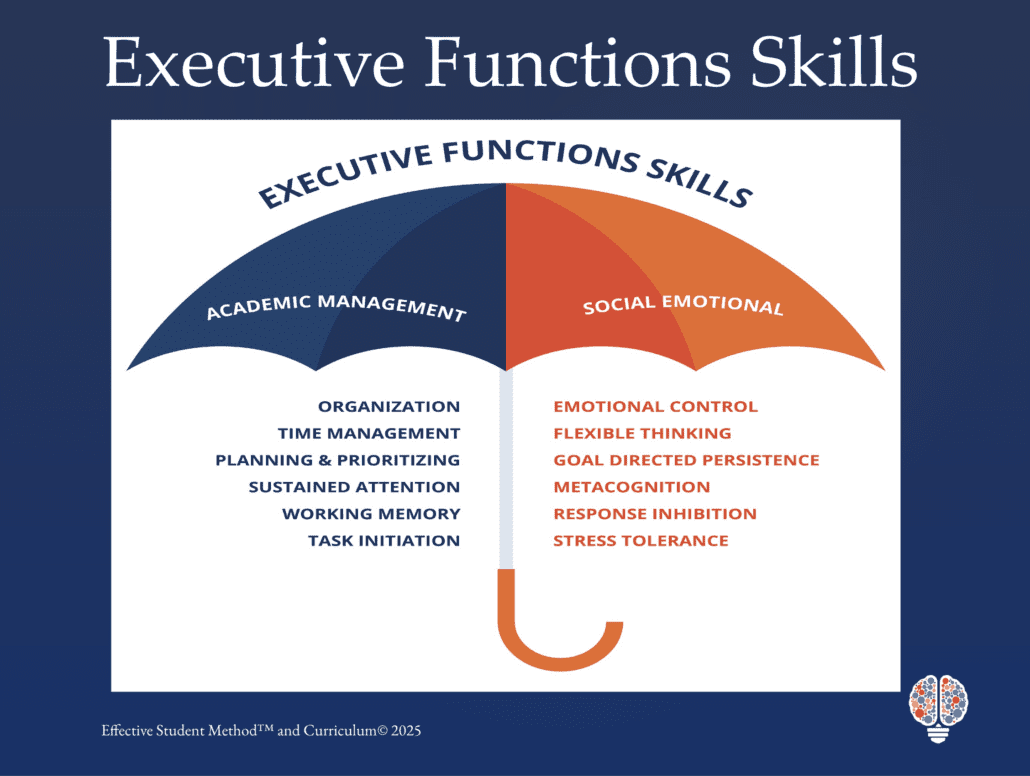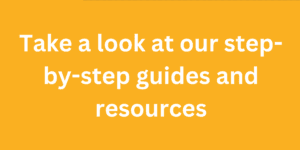In today’s educational landscape, where academic performance often takes center stage, one crucial set of skills quietly underpins a student’s ability to succeed: executive functioning. Often overlooked in favor of traditional subjects, executive functioning skills—like time management, organization, emotional regulation, and goal-directed persistence—are fundamental to a student’s success both in and outside the classroom.
Yet, these skills are not always explicitly taught. That’s where executive function (EF) lesson plans and structured curriculum come in. These resources offer educators the tools to foster life-long skills in students that extend far beyond the pages of a textbook. Let’s explore the value of EF lesson plans, why they’re essential, and how schools can integrate them into daily instruction to transform student outcomes.
What Are Executive Function Skills?
Before diving into curriculum design, it’s important to understand what executive functions actually are. Executive functioning refers to a set of cognitive processes that help individuals manage themselves and their resources in order to achieve a goal. According to the Cleveland Clinic, “Executive function refers to skills that you use to manage everyday tasks like making plans, solving problems and adapting to new situations. The three main skills are working memory, cognitive flexibility and inhibition control. These skills develop during your lifetime, often declining as you get older. But there are ways to keep and improve them.” Some examples include These include:
- Working memory
- Inhibitory control (self-regulation and impulse control)
- Cognitive flexibility
- Planning and prioritizing
- Task initiation and completion
- Time management
- Organization
- Emotional control
The Cleveland Clinic goes on to say, “Executive function refers to mental processes (executive functioning skills) that help you set and carry out goals. You use these skills to solve problems, make plans and manage emotions.” There are three main executive functions:
- Working memory.
- Cognitive flexibility.
- Inhibition control.
At Effective Students, we understand there can be up to twelve different and observable Executive Function skills (or lack thereof) that must be developed. To help prioritize which skills to teach at what age, we look at Executive Function skills in two categories, Academy Management Skills and Social Emotional Skills.
Why Executive Function Instruction Matters
1. Academic Success
Students with strong Executive Function skills are better equipped to manage homework, study for exams, follow multi-step instructions, and transition between tasks. They’re able to organize their thoughts, set priorities, and work independently—all essential for thriving in today’s fast-paced educational environments. Students who lack Executive Function Skills often perceive themselves as less intelligent than other students which can be far from the truth. The lack of strong executive function skills can prevent students from accessing academic content because students are so busy finding papers or trying to keep up with instruction. Studies have shown that neurodiverse students are significantly less likely to attend post secondary programs. It’s our responsibility as educators to help them develop executive function skills which leads to access.
2. Social and Emotional Development
Executive functions also play a major role in emotional regulation. When students can control impulses and manage frustration, they’re more likely to build healthy relationships, resolve conflicts peacefully, and maintain positive self-esteem. School is full of challenges, even the thought of learning something new can be overwhelming. As adults, we are rarely faced with learning as our full time job! It’s no wonder the cognitive load can be burdensome. Without the proper context and tools to make learning easier, students are likely to have an emotional response to challenging academic lessons. We may observe students disengaging, acting out in class or even withdrawing. When students are taught that challenges are a part of life, they can embrace a growth mindset which is part of them building resilience.
3. Long-Term Life Outcomes
Research consistently shows that executive functioning in childhood is a strong predictor of outcomes in adulthood, including academic achievement, employment, physical health, and even financial stability. Teaching executive function skills early is an investment in a student’s future. In fact, strong executive function skills have been said to be the leading indicator of long term success. A small investment now will make a huge difference later.
The Role of Executive Function Lesson Plans in the Classroom
Lesson plans focused on executive functioning provide structured opportunities for students to practice and internalize these skills. These aren’t just one-off activities—they’re deliberate, scaffolded approaches to building capacity over time. Teacher are tasked with too many responsibilities making it difficult to add in another thing. Without structured lessons or processes, executive functions instruction is simply a suggestion or a strategy for students to pick up independently. When educators are prepared to train students with structured lessons, they will have measurable tools, progress reports and clearly defined tasks students can take that lead to their success. A well defined process reduces prompt dependency and creates a framework for students to generalize these skills in the coming years.

Key Features of Effective Executive Function Lesson Plans:
- Explicit instruction of Executive Function concepts (e.g., what is time management? and exercises to build time management skills students can easily follow)
- Practical, real-life examples (case studies, student scenarios to solve)
- Opportunities for reflection and self-assessment (self evaluations)
- Integration into core academic subjects
- Adaptability for different ages and learning needs
For example, a lesson on planning might involve having students break down a project into smaller steps, estimate how long each step will take, and create a timeline to complete it. This teaches time management, goal setting, and task initiation—all under the umbrella of executive function.
Using an Executive Function Curriculum: Best Practices
Creating a full EF curriculum involves more than stringing together a few lesson plans. It requires intentional design, cross-grade continuity, and alignment with broader school goals. Here are some best practices:
1. Start Early
Executive Function skills begin developing in early childhood. Incorporating age-appropriate strategies in preschool and kindergarten, such as teaching routines and using visual schedules, lays the groundwork for more complex skills later on. Effective Students offers the Grit & Growth Mindset Curriculum for school wide and individual instruction. When younger students learn that a growth mindset is something to be valued, there is no limit to what learning they’re willing to undertake.
2. Make It School-Wide
A consistent, school-wide approach ensures that students encounter executive function strategies across classrooms and grade levels using a common vocabulary is critical. When teachers, administrators, and support staff use the same language and practices, it reinforces learning and skill application. The Effective Student Curriculum includes vocabulary building exercises, quizzes, forecasting slides for students and educators to communicate expectations clearly.
3. Embed in Existing Curriculum
Rather than treating executive functioning as a standalone subject, the most successful programs weave these skills into everyday learning. For example, science labs teach planning and flexibility, while group projects build communication and self-regulation. Having a designated time in the schedule for students to plan our their week, evaluate where they need to seek additional help or prepare for tests and quizzes is essential.
4. Engage Families
Parents and caregivers play a crucial role in reinforcing executive function strategies at home. Sharing tips, tools, and language from the classroom can create a supportive environment that bridges school and home life. Often parents struggle with executive function skills as well. The Effective Student Curriculum includes parent handouts for each lesson raising awareness of these essential skills and key ways to support their students’ growth at home.

Tools and Programs That Support Executive Function Instruction
There’s a growing ecosystem of curricula and toolkits designed to support EF instruction, including:
- Instructor Course and Curriculum Effective Student
- Effective Students Lesson Plans
- Grit & Growth Mindset – Building social emotional skills including resilience.
- Peg Dawson’s Smart but Scattered Kids
- Parallel International – Customized transition planning for neurodiverse young adults
- Flocabulary’s SEL & EF songs and lessons
These programs often include comprehensive lesson plans, assessment tools, and professional development support to help teachers implement them effectively.
Building lifelong skills doesn’t have to take, well, a student’s entire life. They can get started today with coaches through Effective Students. During the summer, and beyond, students can work one-on-one with a coach to develop skills such as time management, organization, and positive thinking.
Real-World Impact: Case Studies
A Middle School Transformation
At a middle school in Massachusetts, teachers began using an EF curriculum across grades 6–8. Students tracked assignments using digital planners, practiced mindfulness, and used self-monitoring checklists. Within a year, the school saw a 35% reduction in missing assignments and a noticeable improvement in classroom behavior.
Supporting Neurodivergent Learners
Executive function instruction is particularly vital for students with ADHD, autism, or learning differences, who may struggle more with organization, impulse control, or emotional regulation. The rise in students diagnosed with ADHD is reported to be 26% in children over the last ten (10) years. Schools that integrated executive function practices into IEPs and general education classrooms found that all students—not just those with diagnosed challenges—benefited from the structure and strategies. The Effective Student Curriculum includes progress reports and grading rubrics so students and educators can clearly set goals and measure student progress.
Measuring Success: How Do We Know It Works?
While standardized tests may not capture EF growth directly, teachers can observe improvements in:
- Assignment completion rates
- Measurable outcomes
- Noticeable progress with planning ahead and staying organized
- Student Self Reports and Evaluations
- Student independence
- Behavior and self-regulation
- Academic confidence
- Peer collaboration
Some schools use rubrics or portfolios to track executive function development over time, offering a more holistic view of student growth.
Challenges and Considerations
Implementing an executive function curriculum isn’t without its challenges. Teachers may feel overwhelmed by already packed schedules. There may be limited professional development opportunities focused on executive function. Administrators may struggle to find room in the budget.
But the long-term benefits far outweigh the initial investment. Schools that commit to teaching executive function see measurable gains in both academic performance and student well-being.
Final Thoughts: A Skillset for Life
Teaching executive functioning isn’t just a trend—it’s a necessity. As students navigate an increasingly complex world, the ability to manage themselves, their time, their emotions, and their goals is more important than ever. By embedding EF instruction into everyday teaching, educators aren’t just helping students succeed in school. They’re helping them succeed in life.
If we want to prepare students for college, careers, and beyond, we can’t afford to overlook the brain’s “CEO.” Executive functioning is the engine behind learning—and a well-designed curriculum ensures that engine is running strong.
If executive function coaching may be right for you or your students, explore the Effective Student Method™ course and Instructional Resources. Contact our team to learn more.


